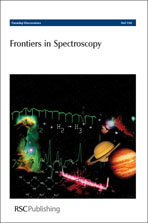Optical frequency combs offer enormous potential in the detection and control of atoms and molecules by combining their vast spectral coverage with the extremely high spectral resolution of each individual comb component. Sensitive and multiplexed trace gas detection via cavity-enhanced direct frequency comb spectroscopy has been demonstrated for various molecules and applications; however, previous demonstrations have been confined to the visible and near-infrared wavelength range. Future spectroscopic capabilities are created by developing comb sources and spectrometers for the deep ultraviolet and mid-infrared spectral regions. Here we present a broadband high resolution mid-infrared frequency comb-based Fourier transform spectrometer operating in the important molecular fingerprint spectral region of 2100–3600 cm−1 (2.8–4.8 μm). The spectrometer, employing a multipass cell, allows simultaneous acquisition of broadband, high resolution spectra (down to 0.0035 cm−1) of many molecular species at concentrations in the part-per-billion range in less than 1 min acquisition time. The system enables precise measurements of concentration even in gas mixtures that exhibit continuous absorption bands. The current sensitivity, 2 × 10−8 cm−1Hz−1/2 per spectral element, is expected to improve by two orders of magnitude with an external enhancement cavity. We have demonstrated this sensitivity increase by combining cavity-enhanced frequency comb spectroscopy with a scanning Fourier transform spectrometer in the near-infrared region and achieving a sensitivity of 4.7 × 10−10 cm−1Hz−1/2. A cavity-enhanced mid-infrared comb spectrometer will provide a near real-time, high sensitivity, high resolution, precisely frequency calibrated, broad bandwidth system for many applications.
You have access to this article
 Please wait while we load your content...
Something went wrong. Try again?
Please wait while we load your content...
Something went wrong. Try again?

 Please wait while we load your content...
Please wait while we load your content...